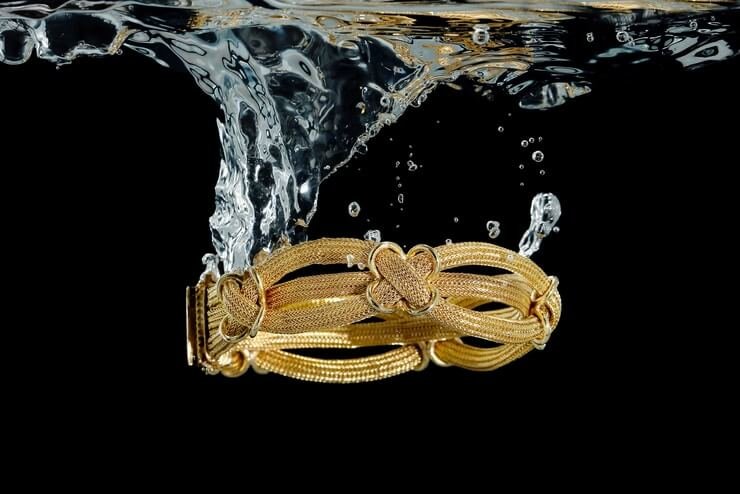Gold plated jewelry adds a touch of elegance and sophistication to any outfit. However, one common concern among jewelry enthusiasts is whether it is safe to wear gold plated jewelry in the shower. In this article, we will delve into the topic and provide expert advice on whether showering with gold plated jewelry is advisable.

About Gold Plated Jewelry
Gold plated jewelry is created by applying a thin layer of gold onto a base metal, such as brass or copper. The gold layer is typically measured in microns and can vary in thickness. The base metal provides the structural integrity of the piece, while the gold layer gives it the desired aesthetic appeal.
Risk of Showering with Gold Plated Jewelry
Showering with gold plated jewelry can pose certain risks. The combination of water, soap, and various chemicals found in shower products can potentially accelerate the wearing off of the gold layer. The prolonged exposure to water can cause the gold plating to fade or become discolored over time. Additionally, the heat and humidity in the shower can impact the adhesive properties that hold the gold layer in place, increasing the chances of it peeling or flaking off.
Factors to Consider About Durability of Gold Plated Jewelry
Several factors influence the durability of gold plated jewelry during showering.

- Thickness of the Gold Layer: The thickness of the gold layer plays a significant role in determining the longevity of the plating. Thicker layers tend to be more resistant to fading or wearing off, whereas thinner layers may be more susceptible to damage.
- Quality of the Gold Plating: The quality of the gold plating itself can vary. Higher quality gold plated jewelry typically undergoes a more robust plating process, resulting in a more durable and long-lasting finish. It is advisable to invest in reputable brands or trusted jewelers to ensure better quality plating.
- Personal Habits: Individual habits, such as the frequency of showering and the use of harsh shower products, can impact the lifespan of gold plated jewelry. Those who shower frequently or use abrasive body washes may experience faster wear and tear on the gold plating.
Tips for Protecting Gold Plated Jewelry
While showering with gold plated jewelry is not recommended, there are measures you can take to help prolong its lifespan.
- Remove Your Jewelry Before Showering: The best way to protect your gold plated jewelry is to take it off before stepping into the shower. This minimizes exposure to water, soaps, and other substances that can accelerate wear and tear.
- Store Jewelry Properly: When not wearing your gold plated jewelry, store it in a dry, clean place away from humidity. This helps prevent tarnishing and maintains the overall condition of the piece.
- Clean Gently: When cleaning your gold plated jewelry, use a soft cloth or a jewelry cleaning solution specifically designed for delicate metals. Avoid using harsh chemicals or abrasive materials that can scratch or damage the plating.
Common FAQs
It is generally advised to avoid wearing gold plated jewelry while swimming, as exposure to chlorine or saltwater can accelerate the wearing off of the gold plating.
While occasional exposure to rainwater may not cause immediate damage, it is best to remove your gold plated jewelry before prolonged exposure to rain.
Even if your gold plated jewelry is labeled as waterproof, it is still recommended to remove it before showering. The continuous exposure to water, soap, and heat can still impact the durability of the gold plating over time.
Drying gold plated jewelry immediately after showering may help minimize the potential damage caused by water exposure. However, it is important to note that water can still seep underneath the gold plating, making it difficult to dry completely.
If you prefer to wear jewelry in the shower without worrying about damage, consider investing in stainless steel, titanium, or solid gold jewelry.
In some cases, it is possible to get gold plated jewelry re-plated. However, the process can be costly and may not be practical for every piece of jewelry.
If you notice any of these signs, such as fading, discoloration, or peeling, it is an indication to consider re-plating or retiring the piece.
Final Thoughts
Showering with gold plated jewelry is not recommended, as the combination of water, soap, and heat can potentially damage the gold plating over time. To ensure the longevity of your gold plated jewelry, it is best to remove it before showering and take proper care by storing it correctly and cleaning it gently. By following these practices, you can enjoy your gold plated jewelry and keep it looking its best for years to come.

Leave a Reply